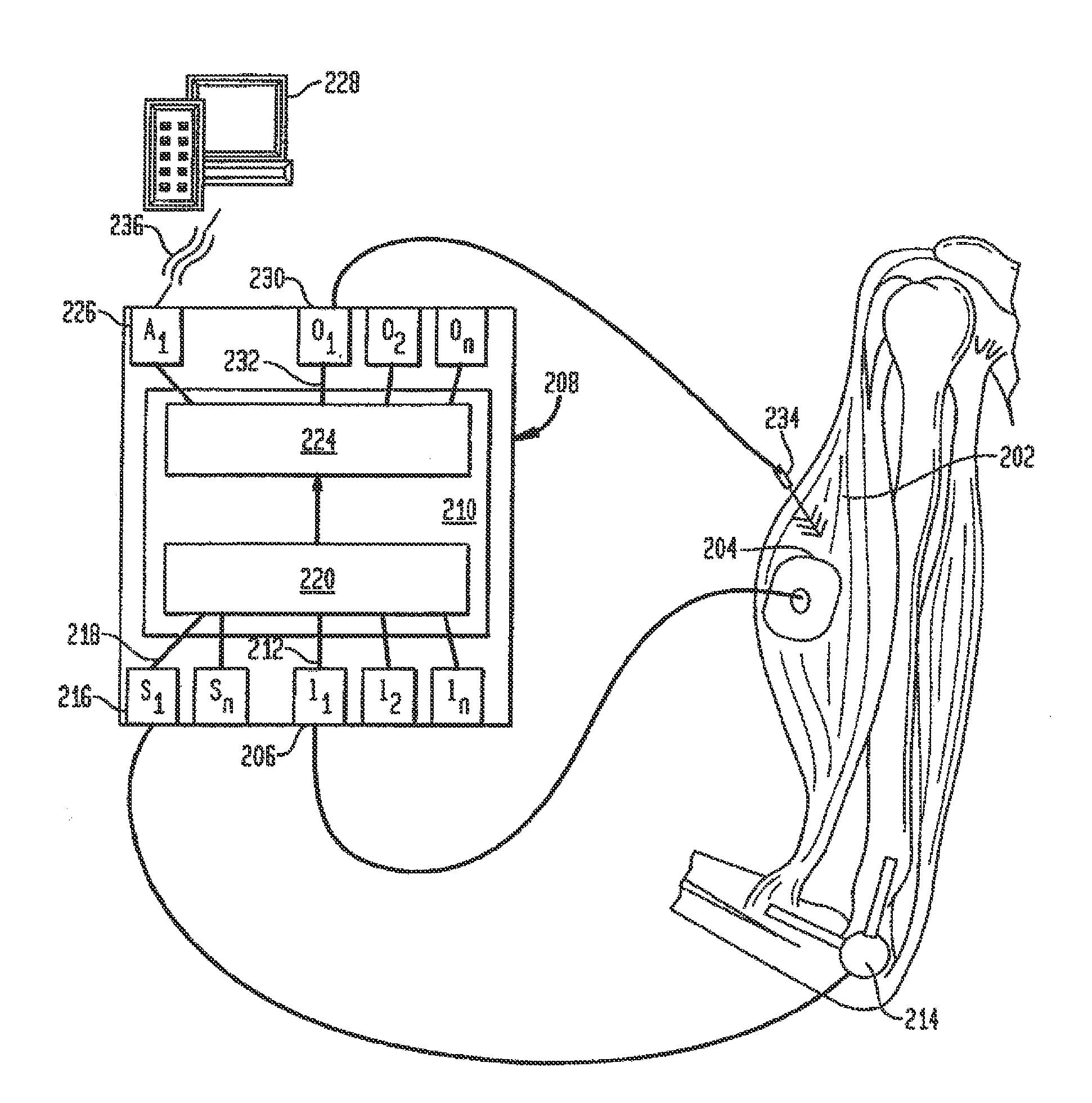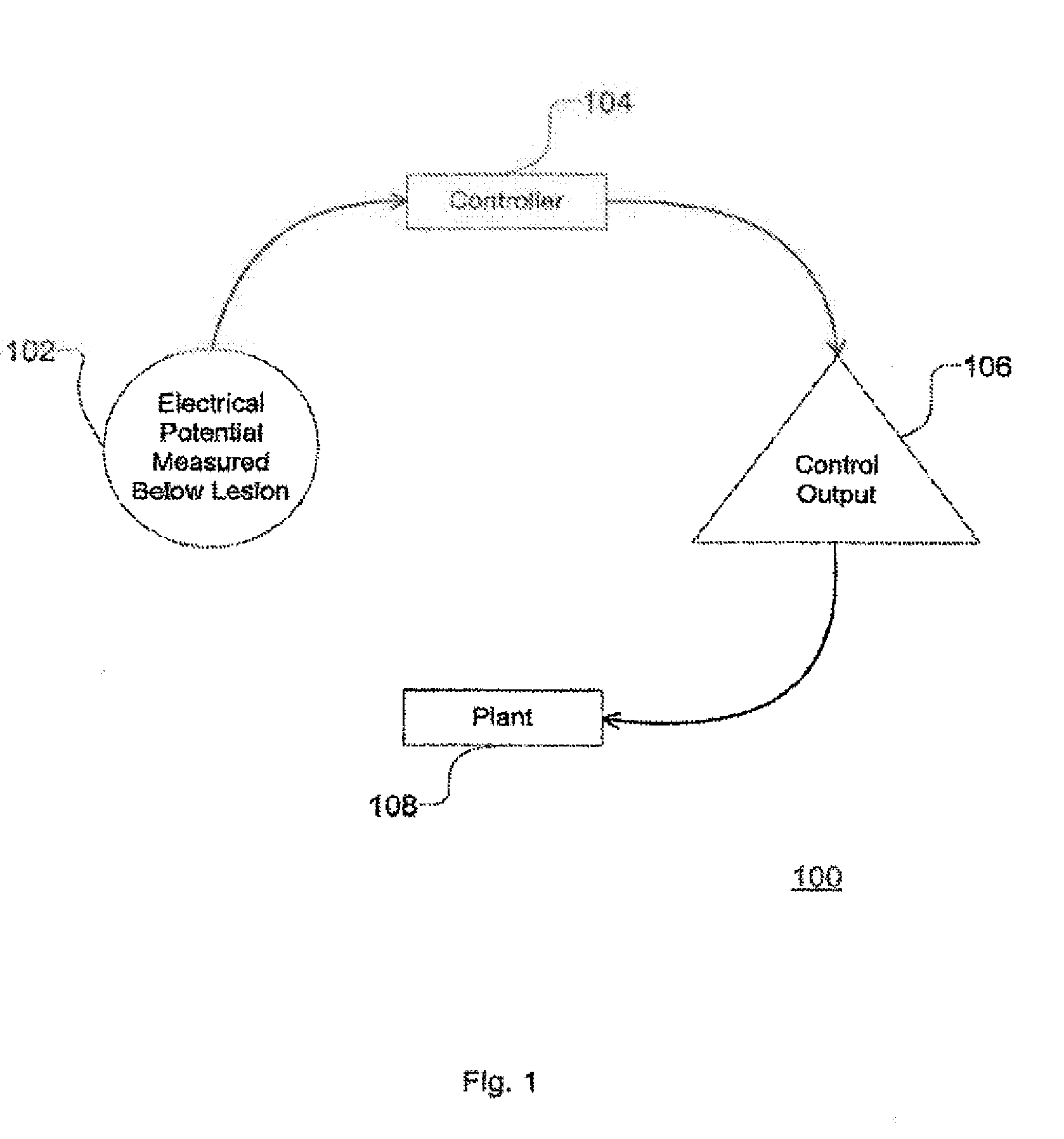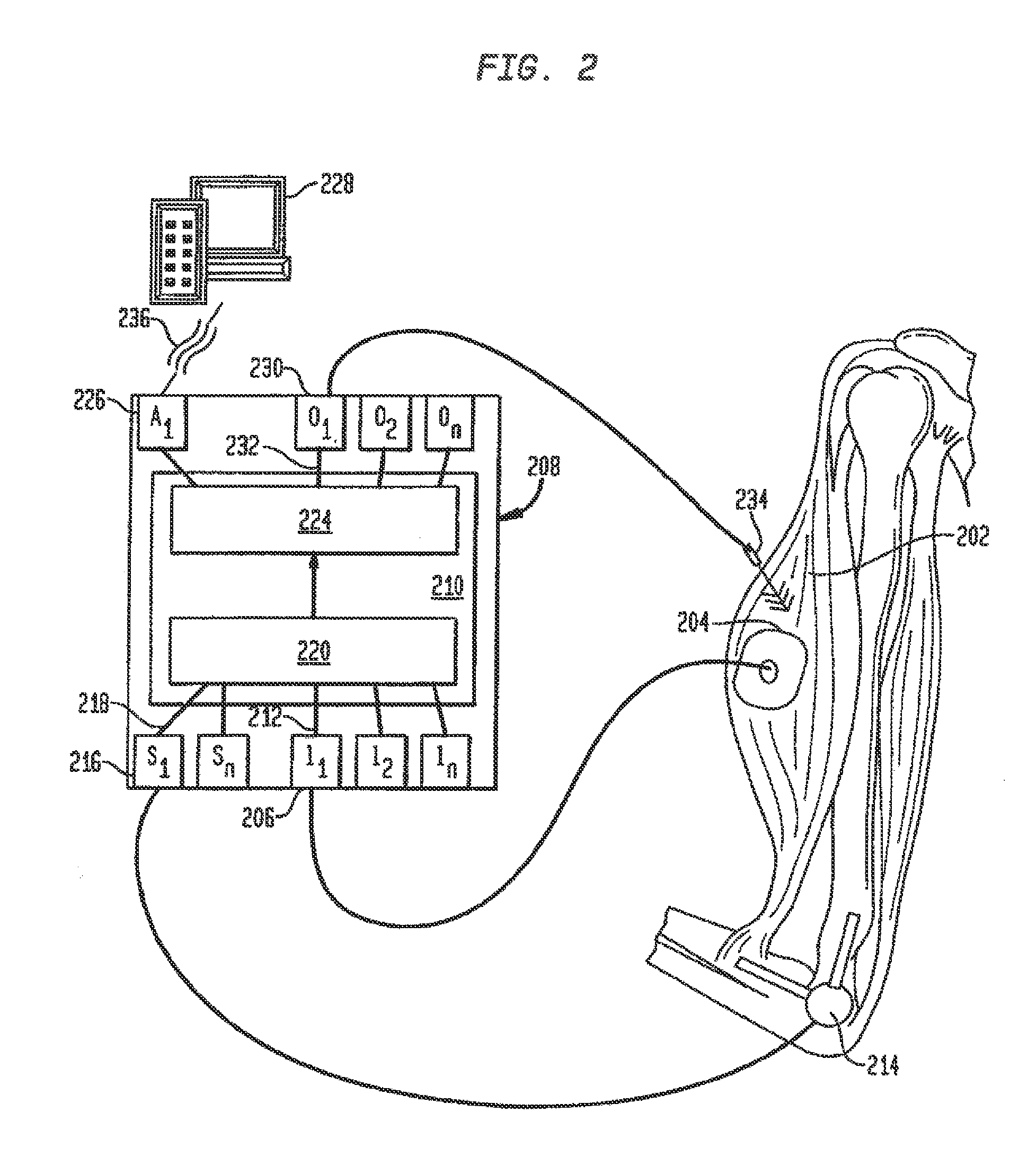Neural prosthesis system and method of control
a prosthesis and neural prosthesis technology, applied in the field of systems and methods of control, can solve problems such as lack of natural command signals, compromise the ability to control basic vital functions, and manifest muscle contraction
- Summary
- Abstract
- Description
- Claims
- Application Information
AI Technical Summary
Benefits of technology
Problems solved by technology
Method used
Image
Examples
Embodiment Construction
[0020]Multiple embodiments of a system and method utilizing electrical signals obtained from clinically paralyzed muscle or nerve as a control input are presented herein. Those of ordinary skill in the art can readily use this disclosure to create alternative embodiments using the teaching contained herein.
[0021]The following terms used herein have the meanings as follows.
[0022]As used herein, the term “discomplete lesion” or “discomplete paralysis” means an injury or damage to the neural pathway between the muscle to the brain, such as that typified by a Spinal Cord Injury (SCI) or those that arise from a variety of diseases such as amyotrophic lateral sclerosis (ALS) or demyelinating diseases that result in functionally or clinically complete (i.e. no externally observable, volitional, physical motor function below the lesion) paralysis of one or more muscles below the lesion. For example, in the case of a discomplete lesion causes by an SCI, there may exist at least some n...
PUM
 Login to View More
Login to View More Abstract
Description
Claims
Application Information
 Login to View More
Login to View More - R&D
- Intellectual Property
- Life Sciences
- Materials
- Tech Scout
- Unparalleled Data Quality
- Higher Quality Content
- 60% Fewer Hallucinations
Browse by: Latest US Patents, China's latest patents, Technical Efficacy Thesaurus, Application Domain, Technology Topic, Popular Technical Reports.
© 2025 PatSnap. All rights reserved.Legal|Privacy policy|Modern Slavery Act Transparency Statement|Sitemap|About US| Contact US: help@patsnap.com



